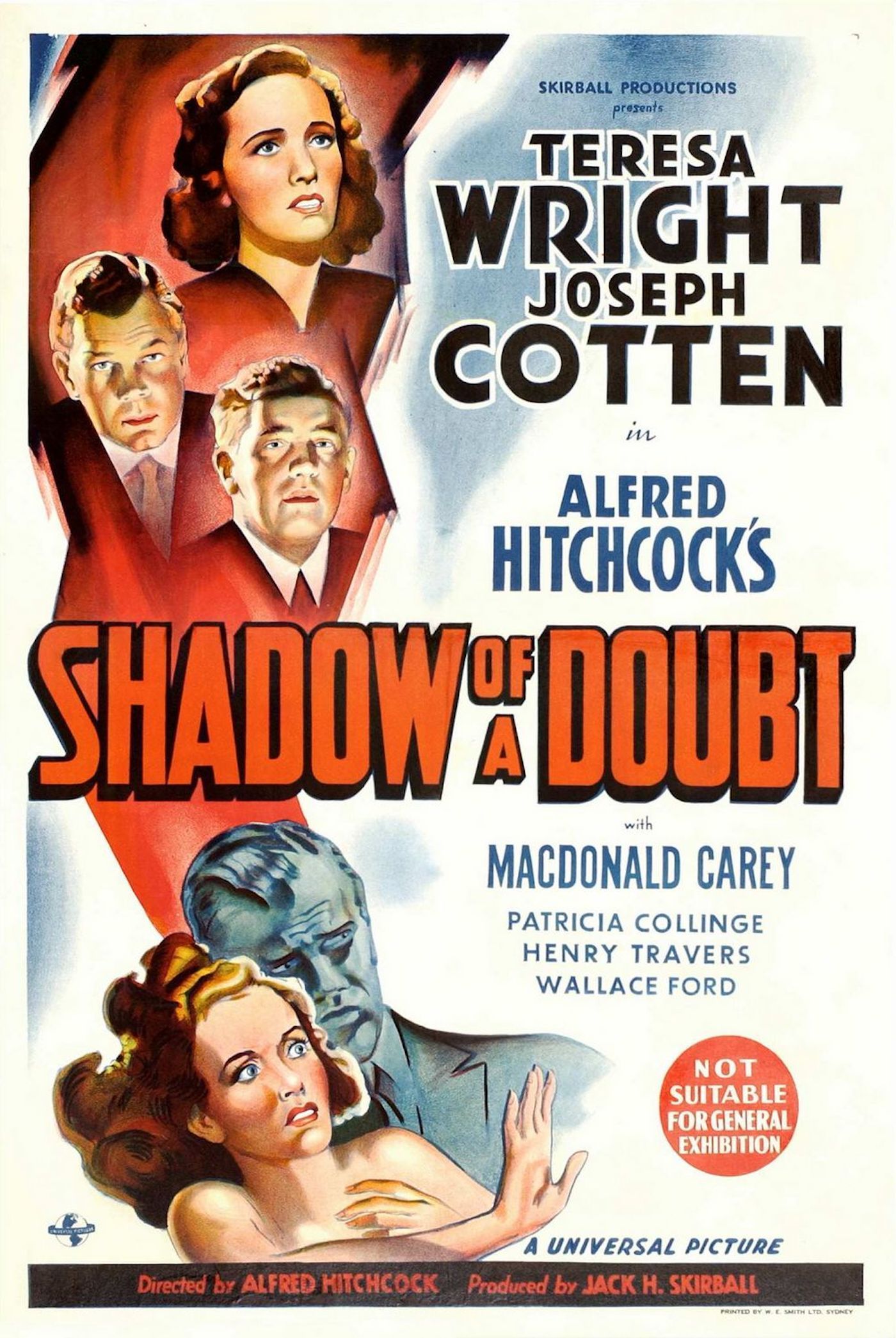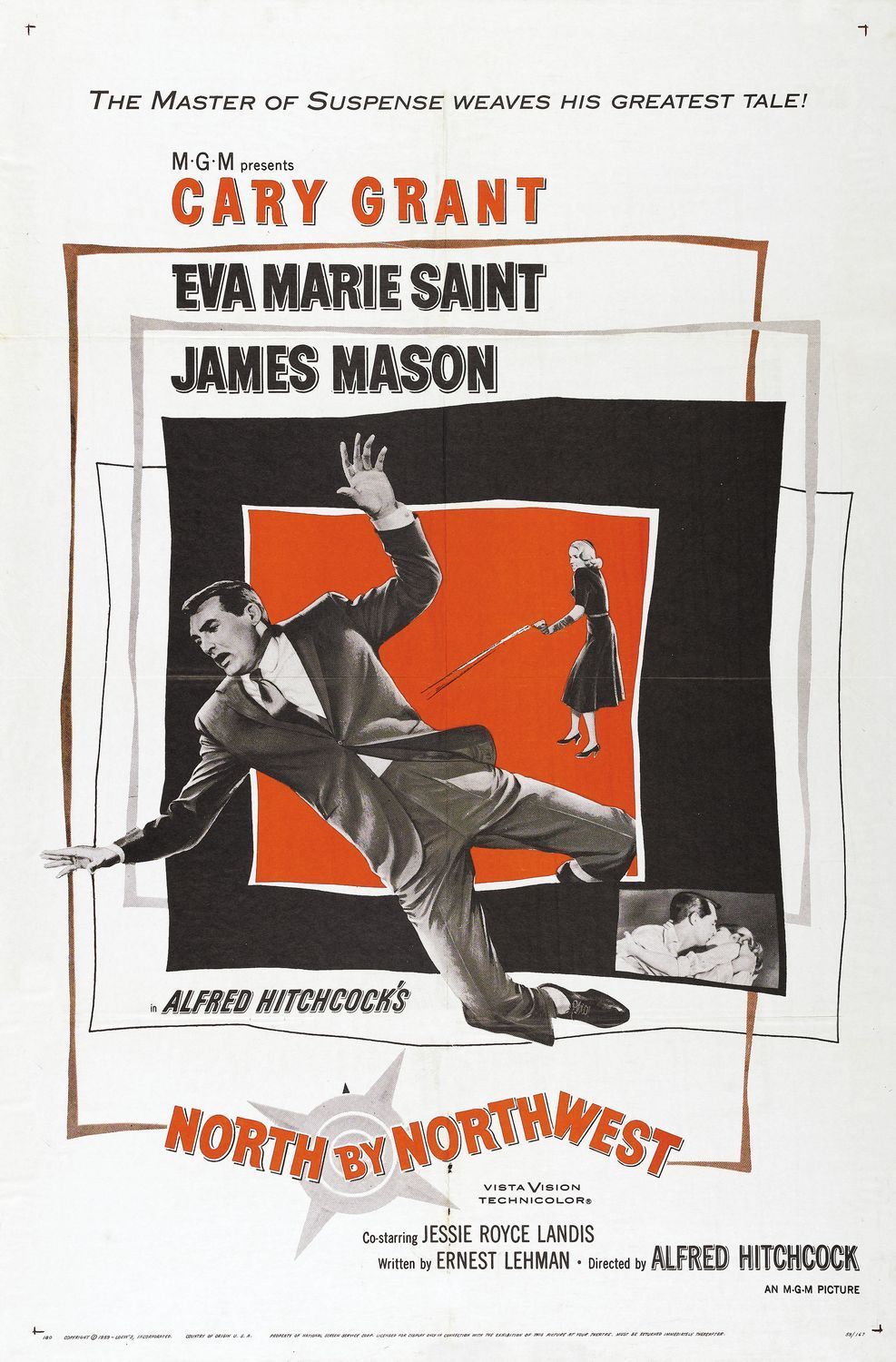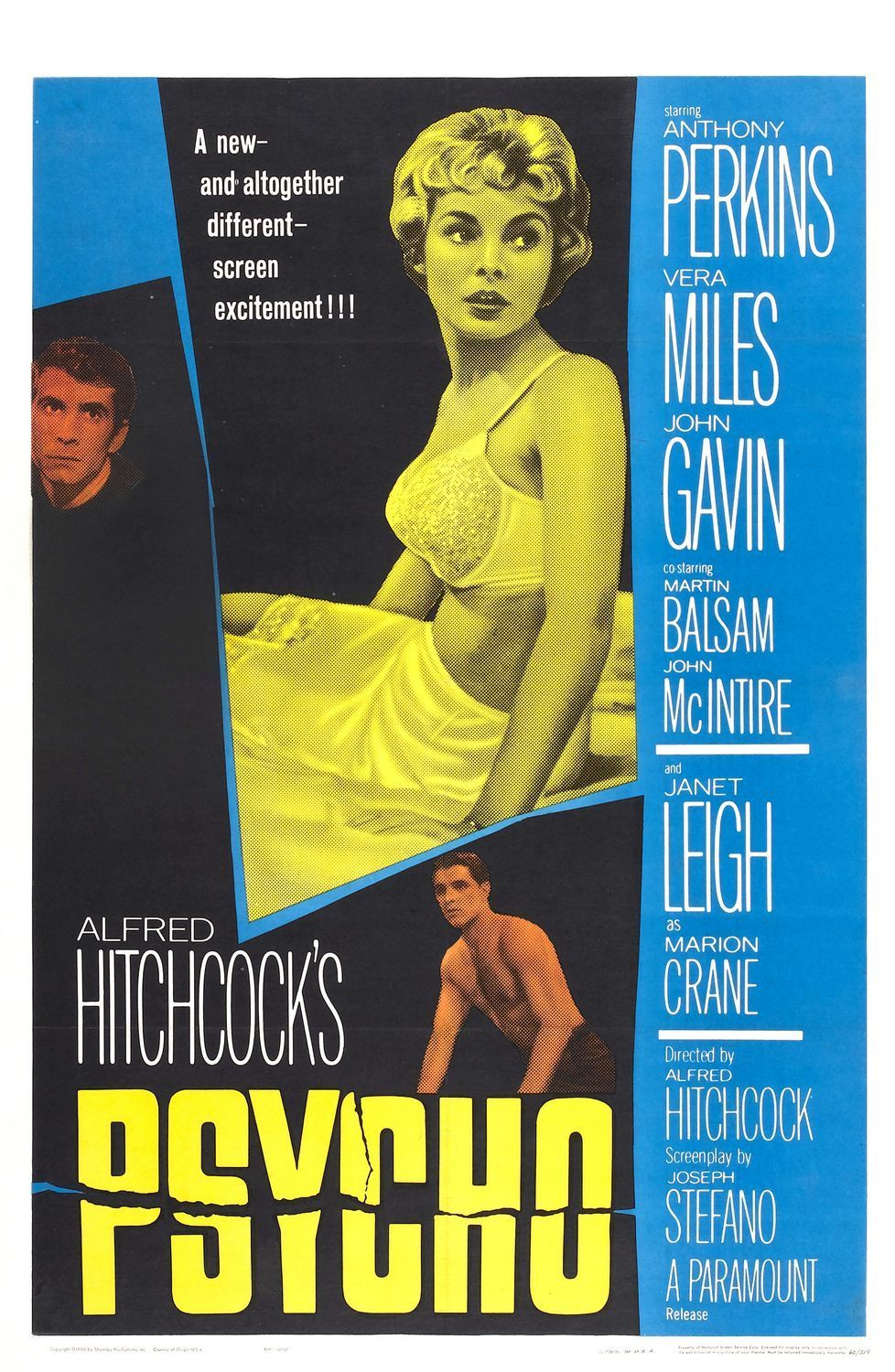Alfred Hitchcock redefined cinema with his unparalleled mastery of suspense, psychological complexity and innovative visual storytelling. Prioritizing visuals over dialogue, he immersed audiences in tension while exploring themes including guilt, voyeurism and repressed fears. Through signature techniques like the “MacGuffin” plot device, point-of-view shots and symbolism, Hitchcock blurred the line between observer and participant, making viewers complicit in the drama. Visually, Hitchcock used light, shadow and distinguished locations as narrative tools, bringing the setting to life and tainting familiar spaces with looming danger. The use of blonde leading actresses, taboo themes and calculated suspense shaped his enduring and iconic style of film direction.
Hitchcock didn’t just entertain; he manipulated his audience, using cinema as a mirror to explore the complexities of human fear and desire, making him one of cinema’s most significant pioneers. Throughout his impressive film career in the 20th century, Hitchcock produced several films ranging in budget and quality. From The 39 Steps to The Birds, these are 10 essential Hitchcock films to watch, ranked by their quality of storytelling, technical innovation and cultural impact.
10
‘Shadow of a Doubt’ (1943)
Starring Teresa Wright and Joseph Cotten
Charlotte “Charlie” Newton (Teresa Wright) is thrilled when her charming Uncle Charlie (Joseph Cotten) arrives for a visit. However, she grows suspicious as her uncle’s strange behavior and other clues suggest there is a darker side to Uncle Charlie. When detectives reveal that Uncle Charlie is a suspected serial killer, young Charlie uncovers chilling truths about her beloved uncle. As Uncle Charlie realizes his niece’s suspicions, he plots to kill her to keep his crimes a secret. Young Charlie must outsmart her dangerous uncle if she wants to survive.
Shadow of a Doubt is an essential Hitchcock film, serving as a battleground where innocence confronts malevolence. The film’s brilliance lies in its dual arcs: Uncle Charlie’s charm masking his sinister nature and Young Charlie’s loss of innocence and disillusionment. Hitchcock subverts genre norms while blending melodrama and mystery, though Uncle Charlie’s secrets are less of a mystery to viewers. Shadow of a Doubt investigates moral gray areas through a harrowing exploration of personal and societal decay and corruption—recurring themes in Hitchcock’s works. The film is indispensable to Hitchcock’s filmography—it is worth watching to fully appreciate his creative range.

- Release Date
-
January 15, 1943
- Cast
-
Teresa Wright
, Joseph Cotten
, Macdonald Carey
, Henry Travers
, Patricia Collinge
, Hume Cronyn
, Wallace Ford
, Edna May Wonacott - Runtime
-
108 Minutes
9
‘The 39 Steps’ (1935)
Starring Robert Donat and Madeleine Carroll
Richard Hannay (Robert Donat), a Canadian in London, becomes entangled in a spy conspiracy after meeting Annabella Smith (Lucie Mannheim), a mysterious woman who claims to be a secret agent. When Annabella is murdered in his apartment, Hannay is mistakenly accused and must flee to Scotland to uncover the truth about “the 39 steps” that Annabella had elusively mentioned. Pursued by both police and spies, Hannay encounters danger, betrayal and an unlikely ally in Pamela (Madeleine Carroll), his reluctant companion. Their adventures lead back to London, where Hannay exposes the spy ring during a dramatic showdown at the Palladium.
The 39 Steps is a cornerstone of cinematic history and a blueprint for the modern thriller. Combining suspense, wit and romance, it pioneered the “wrong man” narrative, where an innocent protagonist is thrust into a world of danger. This film introduced the hallmarks of Hitchcock’s style: quick pacing, inventive backdrops, the archetypal Hitchcock blonde and the “MacGuffin” plot device. The 39 Steps not only secured Hitchcock’s professional reputation but also influenced numerous films, including his more refined and sophisticated film, North by Northwest.

The 39 Steps
- Release Date
-
July 31, 1935
- Cast
-
Robert Donat
, Madeleine Carroll
, Lucie Mannheim
, Godfrey Tearle
, Peggy Ashcroft
, John Laurie
, Helen Haye
, Frank Cellier - Runtime
-
86 Minutes
8
‘Rebecca’ (1940)
Starring Laurence Olivier and Joan Fontaine
A young woman (Joan Fontaine) marries wealthy widower Maxim de Winter (Laurence Olivier), only to find herself overshadowed by the lingering presence of his first wife, Rebecca, at his grand estate, Manderley. The housekeeper, Mrs. Danvers (Judith Anderson), undermines the young woman’s confidence with her adoration of Rebecca, fostering doubts about Maxim’s love. When Rebecca’s body is discovered, dark secrets unravel: Rebecca’s death was no accident. A tense investigation full of twists and turns unveils the circumstances leading up to Rebecca’s demise.
While Hitchcock himself disliked the film and it does lack the hallmarks of later works that have been dubbed “Hitchcockian,” it undeniably bears his genius, from the haunting psychological depth to the innovative camerawork that subtly underscores the oppressive atmosphere of Manderley. Themes of love and obsession in this gothic tale are also prevalent in Hitchcock’s later film Vertigo. The parallels between the two films make Rebecca a key Hitchcock film, precisely because his creative voice is stifled in this one and not the other, demonstrating his range and the flair he brings to cinema. As a film, Rebecca creates a suffocating, dreamlike ambiance—a landmark in the evolution of Hitchcock’s artistic identity.
- Release Date
-
April 12, 1940
- Cast
-
Laurence Olivier
, Joan Fontaine
, George Sanders
, Judith Anderson
, Nigel Bruce
, Reginald Denny
, C. Aubrey Smith
, Gladys Cooper - Runtime
-
130 Minutes
7
‘The Birds’ (1963)
Starring Tippi Hedren, Rod Taylor, Jessica Tandy and Suzanne Pleshette
Socialite Melanie Daniels (Tippi Hedren) meets lawyer Mitch Brenner (Rod Taylor) in San Francisco. What begins as a romantic pursuit turns terrifying when birds inexplicably start attacking people. The attacks grow increasingly violent, and Melanie, Mitch, his family and the town desperately struggle for survival as they face relentless assaults. Amidst chaos, panic and destruction, the group seeks refuge, but the reason for the bird attacks remains a mystery.
As an essential work in Hitchcock’s filmography, The Birds exemplifies his mastery of suspense and thematic depth. The film explores love and violence through the contrasting symbolism of caged lovebirds and aggressive seagulls and crows, reflecting human vulnerability in the face of nature’s unpredictability. The silence throughout the movie heightens tension, relying on unsettling sound effects that mimic the chaos of the attacks. Stylistically, the film’s montage editing and slow burn build unease. The Birds transcends horror conventions by offering no resolution or explanation, embodying existential dread and crafting a visually and emotionally resonant tale of nature’s power and humanity’s fragility.

- Release Date
-
March 28, 1963
- Cast
-
Rod Taylor
, Jessica Tandy
, Suzanne Pleshette
, Tippi Hedren - Runtime
-
119
6
‘Strangers on a Train’ (1951)
Starring Farley Granger, Ruth Roman and Robert Walker
A tennis player, Guy (Farley Granger), encounters a charming psychopath, Bruno (Robert Walker), who proposes a chilling scheme: they, two strangers, swap murders, leaving no motives to tie them to the crimes. Guy shrugs off the idea, but Bruno follows through, murdering Guy’s unfaithful wife, Miriam (Kasey Rogers) and demanding Guy kill Bruno’s father (Jonathan Hale) in return. As Bruno escalates his threats, Guy must outmaneuver the manipulative sociopath while clearing his own name.
A prevalent theme of dichotomies—for instance, the coexistence of good and evil—creates a cinematic chess match between Guy and Bruno, reflecting the duality of human nature. The iconic visuals, including crosscutting, the carousel scene and the symbolic interplay of lighting contrast, underscore Hitchcock’s technical innovation. The film also introduces one of Hitchcock’s most captivating villains, Bruno, whose charm and menace challenge viewers’ sympathies. Strangers on a Train is a true masterclass in Hitchcock’s thoughtful visuals and their symbolism and storytelling.
- Release Date
-
June 27, 1951
- Cast
-
Farley Granger
, Ruth Roman
, Robert Walker
, Leo G. Carroll
, Patricia Hitchcock
, Kasey Rogers - Runtime
-
101 minutes
5
‘Notorious’ (1946)
Starring Cary Grant, Ingrid Bergman and Claude Rains
U.S. agent Devlin (Cary Grant) recruits Alicia Huberman (Ingrid Bergman), a convicted Nazi spy’s daughter, to infiltrate a Nazi group. Posing as a socialite, Alicia seduces a member of the group, Alexander Sebastian (Claude Rains). Despite Devlin and Alicia’s romantic feelings for one another, Alicia marries Alexander for the sake of the mission. As Alicia gathers information, Alexander realizes her betrayal, resolving to poison her to death slowly. Devlin rescues her, leaving Alexander to face his ominous fate.
Notorious demonstrates Hitchcock’s mastery of romance, espionage and psychological thrill. With a distinctly elevated emotional complexity, elevated from Hitchcock’s earlier works, the film explores trust, betrayal and ethical dilemmas, weaving a love story between duty and desire. Hitchcock’s technical prowess is ever-present in the film, evident in the iconic crane shot which finds the cellar key in Alicia’s hand. The richly drawn characters elevate this spy thriller into a study of human vulnerability.

- Release Date
-
August 15, 1946
- Cast
-
Cary Grant
, Ingrid Bergman
, Claude Rains
, Louis Calhern
, Leopoldine Konstantin - Runtime
-
101 Minutes
4
‘North by Northwest’ (1959)
Starring Cary Grant, Eva Marie Saint and James Mason
North by Northwest is a thrilling tale of mistaken identity, espionage and romance. Advertising executive Roger Thornhill (Grant) is swept into a deadly chase across the United States after being misidentified as a government agent. Pursued by the suave yet ruthless Phillip Vandamm (James Mason) and his henchmen, Thornhill faces chaos and danger, from a crop-duster attack to a harrowing escape atop Mount Rushmore. Along the way, he meets the enigmatic Eve Kendall (Eva Marie Saint), whose true loyalties keep him guessing.
The film is a defining part of Hitchcock’s filmography, blending thrilling suspense with wit, iconic set pieces and an action-packed exploration of mistaken identity. Crafted as a lighter, more adventurous follow-up to Vertigo, the film showcases Hitchcock’s versatility and mastery of cinematic storytelling. Its unforgettable sequences—like the crop-duster chase and Mount Rushmore escape—redefined action cinema, while the charming performances of Cary Grant and Eva Marie Saint epitomize Hitchcock’s archetypal leads. With gripping themes of deception and moral ambiguity and its sophisticated style, North by Northwest is remarkable, especially as a precursor to the modern espionage thriller.

- Release Date
-
September 8, 1959
- Cast
-
Eva Marie Saint
, James Mason
, Cary Grant
, Leo G. Carroll
, Jessie Royce Landis - Runtime
-
136 minutes
3
‘Rear Window’ (1954)
Starring James Stewart and Grace Kelly
While recovering from a broken leg, a photojournalist, Jeff (James Stewart), confined to his apartment, becomes fascinated by the lives of his neighbors, visible through their open windows. His observations take a dark turn when he suspects one neighbor (Raymond Burr) of murdering his wife. Enlisting the help of his girlfriend (Grace Kelly) and his nurse (Thelma Ritter), he begins a risky investigation. As the tension escalates, the amateur sleuthing leads to a deadly confrontation, forcing him to rely on quick thinking to survive.
Rear Window is quintessential Hitchcock, weaving together suspense, technical innovation and psychology within the confines of Jeff’s apartment. Through masterful use of color, contrasting lighting and sound design, Hitchcock enhances realism and tension. Beyond the mystery, the film offers layered character studies, exploring Jeff’s fear of commitment and broader social themes. Hitchcock’s meticulous direction and the symbolic framing of what film critic Laura Mulvey later coined the “male gaze” challenges viewers to confront their own voyeurism. A cinematic masterpiece, Rear Window remains an enduring exploration of human nature and the art of storytelling.

- Release Date
-
September 1, 1954
- Cast
-
Thelma Ritter
, James Stewart
, Wendell Corey
, Grace Kelly
, Raymond Burr - Runtime
-
112 minutes
2
‘Psycho’ (1960)
Starring Anthony Perkins, Vera Miles and John Gavin
After stealing money from her employer, Marion Crane (Janet Leigh) skips town, stopping at the isolated Bates Motel when a storm strikes. There, she meets Norman Bates (Anthony Perkins), the strange motel owner, and learns of his mysterious, controlling mother. Shortly after checking into her room, Marion is murdered by Norman’s mother. Marion’s sister (Vera Miles) and boyfriend (John Gavin) investigate her disappearance, uncovering disturbing truths—Norman’s mother is long dead, and Norman has assumed her identity to commit the murders.
Psycho redefined cinema with its blend of suspense, psychological horror and phenomenal storytelling. Hitchcock’s innovative techniques—such as the iconic shower scene with Bernard Herrmann’s chilling score—brought raw tension and artistic sophistication to mainstream audiences. Subverting narrative conventions, Hitchcock shocks by killing the protagonist fairly early on, keeping viewers on edge. Its exploration of guilt, repression and fractured identity, paired with meticulous production design, makes this Hitchcock film a must-watch. Psycho set new standards for horror and thrillers, influencing the slasher genre while delving into the human psyche, showcasing Hitchcock’s genius in manipulating audience emotions and expectations.

Psycho
- Release Date
-
September 8, 1960
- Cast
-
Janet Leigh
, Martin Balsam
, Anthony Perkins
, John Gavin
, Vera Miles - Runtime
-
109 minutes
1
‘Vertigo’ (1958)
Starring James Stewart and Kim Novak
Retired detective John “Scottie” Ferguson (Stewart) struggles with a fear of heights after witnessing a colleague’s fatal fall. Persuaded by an old friend, Gavin Elster (Tom Helmore), to investigate his wife Madeleine’s (Kim Novak) odd behavior, Scottie follows her and becomes enamored. Madeleine appears possessed by an ancestor with a tragic past and dies in an apparent suicide. Devastated, Scottie meets Judy Barton (Novak), who eerily resembles Madeleine. Judy is revealed to have impersonated Madeleine in Elster’s plot to murder his real wife. Consumed by obsession, Scottie transforms Judy back into Madeleine’s image. Discovering the deception, Scottie confronts her at the scene of Madeleine’s death, where a tragic twist unfolds.
Vertigo is an essential Hitchcock masterpiece, combining groundbreaking techniques with personal and psychological themes. Its exploration of obsession, identity and psychological unraveling makes it one of cinema’s most haunting and layered works. Kim Novak takes on both roles seamlessly, and the dynamic between Judy and Scottie leaves viewers ruminating on the metaphorical significance of the male gaze. The camera effects visually convey a sense of unease and bewilderment, while the mesmerizing score amplifies the film’s dreamlike atmosphere. Featuring surrealism, romance and suspense, it remains a timeless study of the male gaze, human vulnerability and obsession.

- Release Date
-
May 9, 1958
- Cast
-
Tom Helmore
, Barbara Bel Geddes
, Kim Novak
, James Stewart
, Henry Jones - Runtime
-
128 minutes










